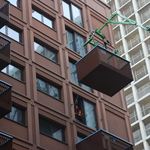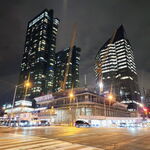ssiguy2
Senior Member
If Ford decides the costs of electrification are too high then it pretty much guarantees a hydrogen system with battery far behind and catenary dead last. Catenary is a good and reliable system but it also requires huge upfront infrastructure costs. Battery negates some of that by allowing the catenary system to be smaller and then run the trains on battery but even that would still cost a lot and be time consuming. Battery is more appropriate for systems that already have a core electrified system which Toronto has none of. After years of talking about electrified RER, the only thing electric run by GO are the lightbulbs.
Hydrogen basically just requires buying the trains themselves and putting in the hydrogen fueling stations which is no different than substations needed for catenary. Hydrogen would also be cheaper to run over the long term It is not as efficient as catenary but the electrical usage can be bought at cheaper non-peak times. It also doesn't require the upkeep of the catenary system of replacement, upkeep, and emergency repairs when storms hit which also makes it more reliable in severe weather.
Hydrogen also has 2 key political advantages over battery and/or catenary. First it would help develop an upcoming industry which Ontario's Hyrogenics is a TRUE world leader and Alstom trains are based upon it. Second, nearly the entire system could be up and running BEFORE the next provincial election and it would be a real suburban vote bonanza and not just in the 905. Yes the 905 would get vastly superior service but even inner city Torontonians would gladly welcome the cleaner air and blissful quiet which they don't enjoy today to say nothing of none of the visual pollution.
Hydrogen basically just requires buying the trains themselves and putting in the hydrogen fueling stations which is no different than substations needed for catenary. Hydrogen would also be cheaper to run over the long term It is not as efficient as catenary but the electrical usage can be bought at cheaper non-peak times. It also doesn't require the upkeep of the catenary system of replacement, upkeep, and emergency repairs when storms hit which also makes it more reliable in severe weather.
Hydrogen also has 2 key political advantages over battery and/or catenary. First it would help develop an upcoming industry which Ontario's Hyrogenics is a TRUE world leader and Alstom trains are based upon it. Second, nearly the entire system could be up and running BEFORE the next provincial election and it would be a real suburban vote bonanza and not just in the 905. Yes the 905 would get vastly superior service but even inner city Torontonians would gladly welcome the cleaner air and blissful quiet which they don't enjoy today to say nothing of none of the visual pollution.







